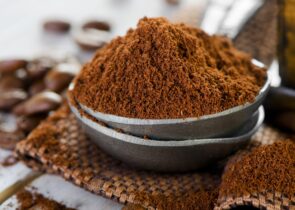If you’re learning to make espresso at home, it’s likely because you’re obsessed with pulling the perfect tasting cup of espresso coffee. But using a manual or semi-automatic espresso machine can seem daunting at first. Have no fear! I first learned to make espresso on a Gaggia Classic Pro.
Luckily, this machine is very simple and easy to use. I’ll provide a step-by-step guide on how to use Gaggia espresso machine to pull excellent espresso shots and cover how to use the steam wand for milk espresso beverages.
With this guide, you’ll be able to avoid some common mistakes and be on your way to making a great cup of espresso. I’ll walk through my process using my Gaggia Classic, but these tips should help you if you’re using other espresso machines as well.
What you’ll need
- Espresso cup
- Tamper
- Whole bean espresso and a grinder, or finely ground espresso
- Scale
- Knock box
- Tamping mat (will help you not scratch your counter!)
- Milk pitcher
- Milk of your choice
How To Use Gaggia Espresso Machine: Pulling an espresso shot
Step 1: Heat the Machine
Make sure your water tank is full of clean water. You can remove the tank or fill it from the top using filter water. If your machine isn’t primed, you can prime it by opening the steam/hot water valve until a steady stream of water is released from the wand. This will fill the boiler with fresh water. Make sure you have a cup under the wand to avoid a mess.
Turn on your machine and allow it to warm up for 2-3 minutes with the portafilter locked in. Heating with your portafilter inserted is important – you want to make sure it won’t cool your shot during extraction.
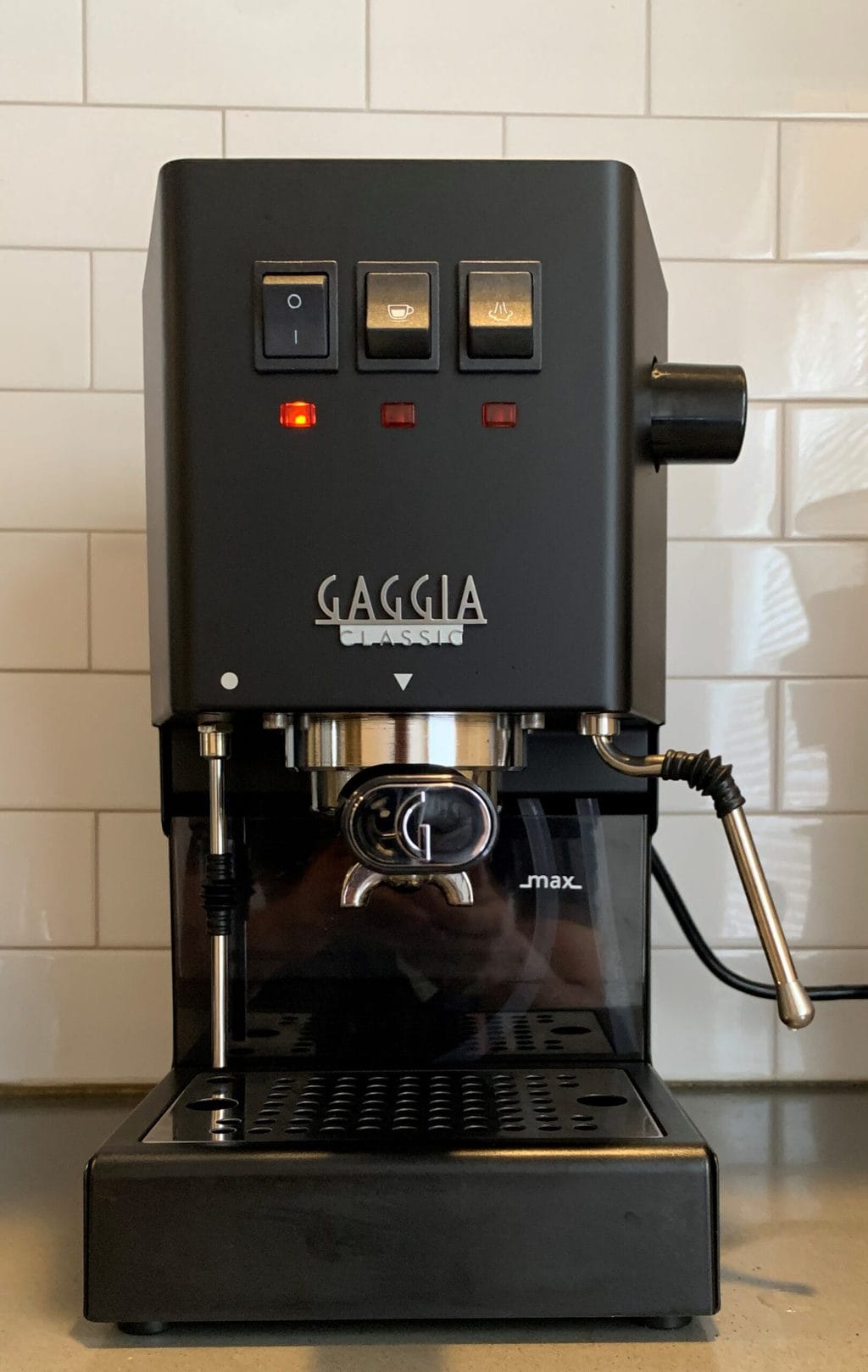
While you wait for your boiler water to heat, you can start preparing your coffee.
Step 2: Measure and Grind Your Dose
Grab your favorite espresso beans and measure out your dose. I typically weigh out an 18-gram dose for a double shot or 9 grams for single cups of espresso. You can use the non-pressurized double basket for either dose: it will give you extra room for a single shot and won’t affect your extraction.
Dry your portafilter/basket before filling it. If part of your coffee is wet before you pull the shot, you’ll get uneven flow through your basket.
Grind size is a critical factor in your espresso brewing. Too coarse, and your shot will pull quickly, giving you weak, sour-tasting espresso. Too fine, and your espresso will brew slowly, giving you bitter espresso. Adjust your grind size until your shots pull in 20 -30 seconds.
If you don’t own a coffee grinder (although I highly recommend getting one), you can ask your local coffee shop to grind coffee beans for your espresso machine. Use arabica rather than robusta beans to avoid making your espresso bitter.
Step 3: Distribute and Tamp
Once you have coffee in your basket, make sure the grounds are evenly distributed. Moving your portafilter around while grinding will help achieve even distribution. I sometimes give my portafilter a light tap on the counter while keeping it level until the grounds look even.
Tamp your coffee by holding the tamper at the edge and evenly pressing it vertically into the basket. Then apply pressure from the handle. You are aiming for about 30 pounds of force. Unless you have a calibrated tamper, this won’t be exact. You will want to press firmly enough to compress the coffee, but you don’t need to give it all your strength. I slowly turn the tamper about 90 degrees at the end of my tamp.
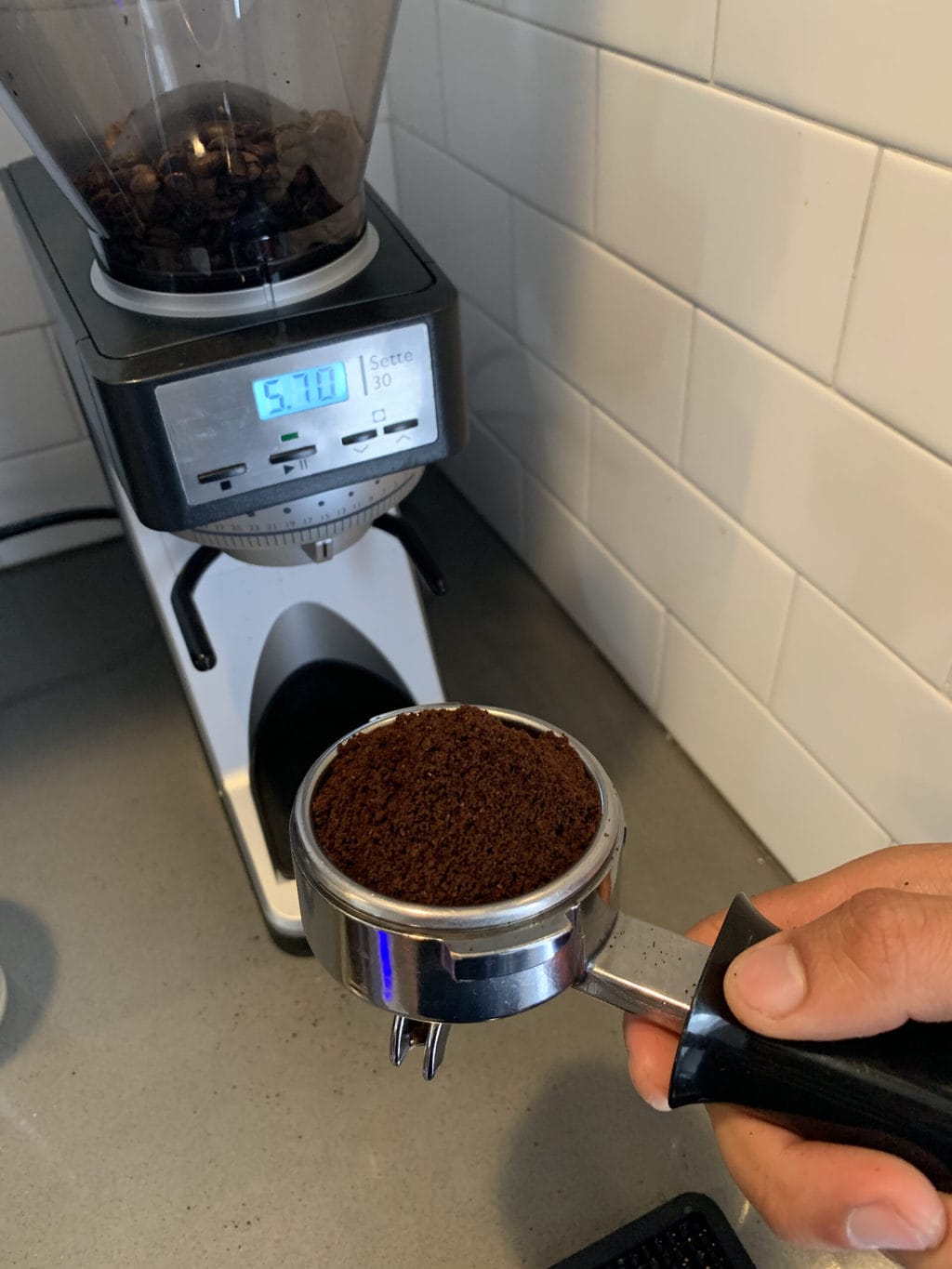
A good tamping technique requires practice to get right, but you will perfect this process over time! After tamping, you can inspect the basket and check if your puck is level. If there are any unsettled grounds in the basket, you can polish the puck by rotating the tamper in the basket without applying any pressure.
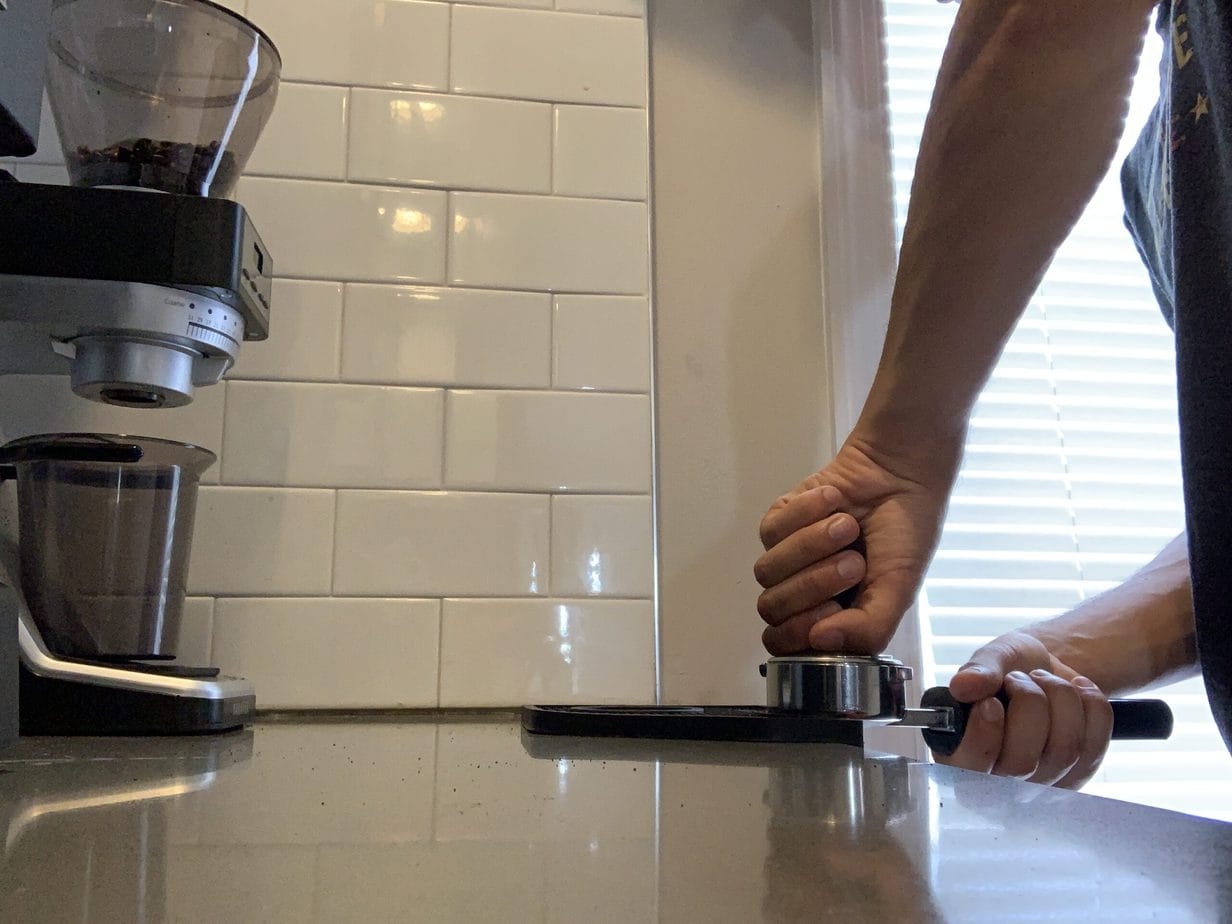
Step 4: Start Your Shot
Before you begin brewing, you can use a technique called temperature surfing to get the right temp for the shot. Single boiler espresso machines like the Gaggia Classic have a bit of temperature range, but you can get consistent brewing temperature with some simple tricks.
If you are working with a roast that favors cooler brewing, start your shot about 30 seconds after the espresso light comes on and the boiler is off. You can flip the steam switch on for 2-3 seconds for a warmer extraction and then allow the machine to cool for a few seconds before starting the shot. This will “bump up” your brewing temp.
This is not an essential step, so don’t worry if this seems overwhelming. If you’re new to using your espresso machine, wait until you see the espresso light and press the button to start your shot.
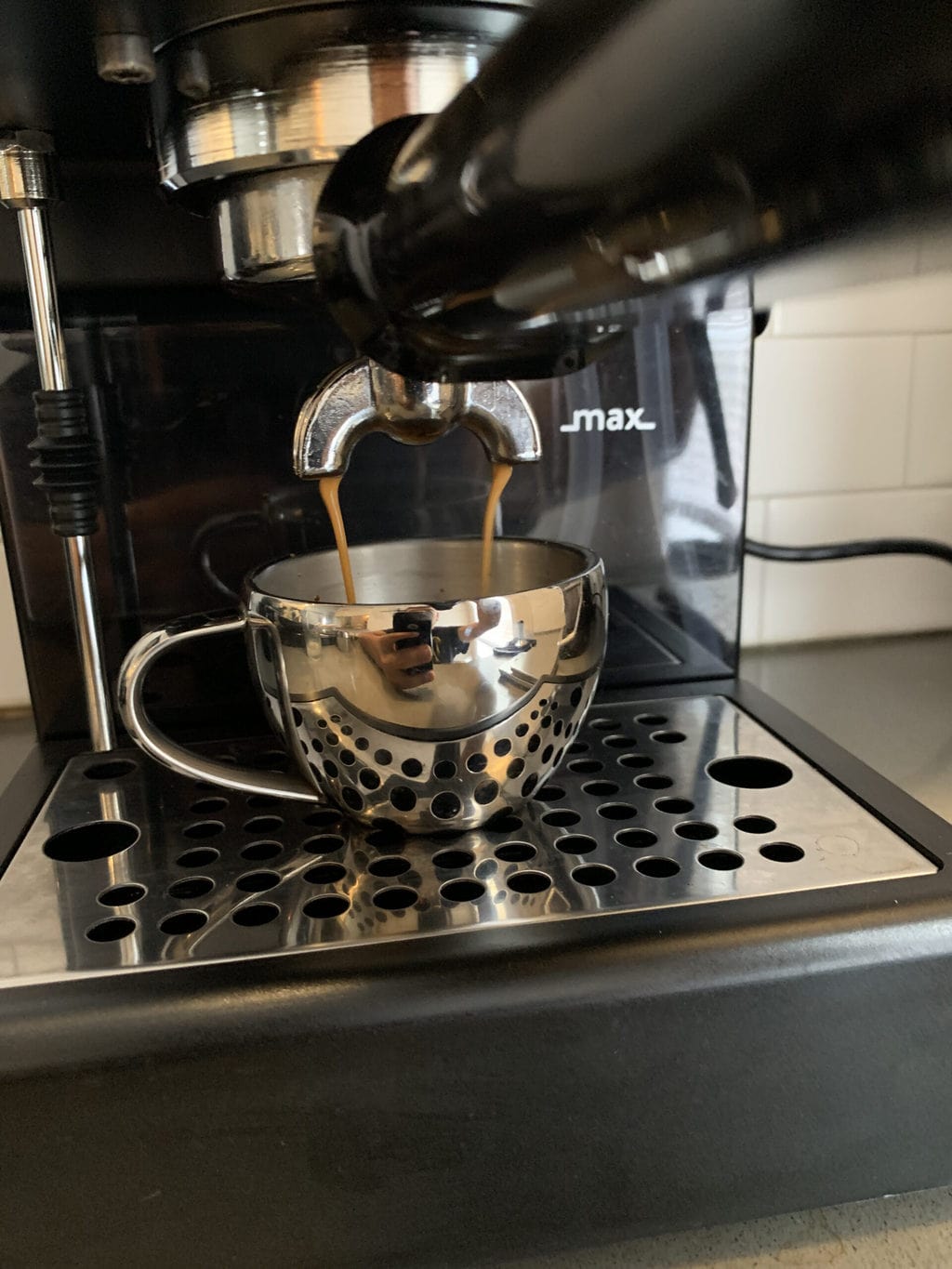
Step 5: Cut Off Your Shot
Water will begin flowing through your espresso and dripping from the portafilter. You’ll know you prepared your coffee puck properly if you see a thin, steady stream. You should pull your shot for about 20 – 30 seconds, but there are a couple of ways to know exactly when to stop your espresso.
The most precise way is by weighing your espresso cup after brewing and achieving an ideal brewing ratio of 2:1 – 2 grams of espresso per 1 gram of ground coffee. With this method, you’ll weigh out a 36-gram cup of espresso for your 18-gram double shot dose.
An easier way to know when to stop your shot is waiting to see the stream turn “blond.” At the end of your extraction, the stream suddenly fades to a much lighter color and appears watery in texture. Hit the espresso button again at this point to stop the shot.
Step 6: Clean Up
Now you have a delicious cup of espresso! Before you start drinking, a few steps will prepare your machine to turn off or leave it ready to pull another shot.
Remove your portafilter from the group head and empty your grounds into a knock box. Press the espresso button and run some additional water through the group head to clean off any excess grounds. Use a wet towel to wipe any remaining coffee grounds in your portafilter and basket.
Keeping your machine clean ensures your Gaggia is performing at its best. You can pull another shot after waiting a few minutes for your machine to warm up again. You can also power down your machine at this point if you’re done.
Or if you want to make a latte or a cappuccino, you can move on to milk-steaming.
Steaming Milk
The Gaggia Classic has an excellent steam wand to make creamy microfoam. Here are the basic steps to steam milk on the Gaggia, but also check out our in-depth guide for more info.
Step 1: Turn on the Steam Switch
Turn on the steam switch and open the steam knob to purge any water built up in the wand. Once the water is out, close the knob and wait for the light to show that your machine is warm enough to begin steaming. If you are steaming larger quantities of milk, start steaming a few seconds before the steamer light comes on.
Step 2: Stretching
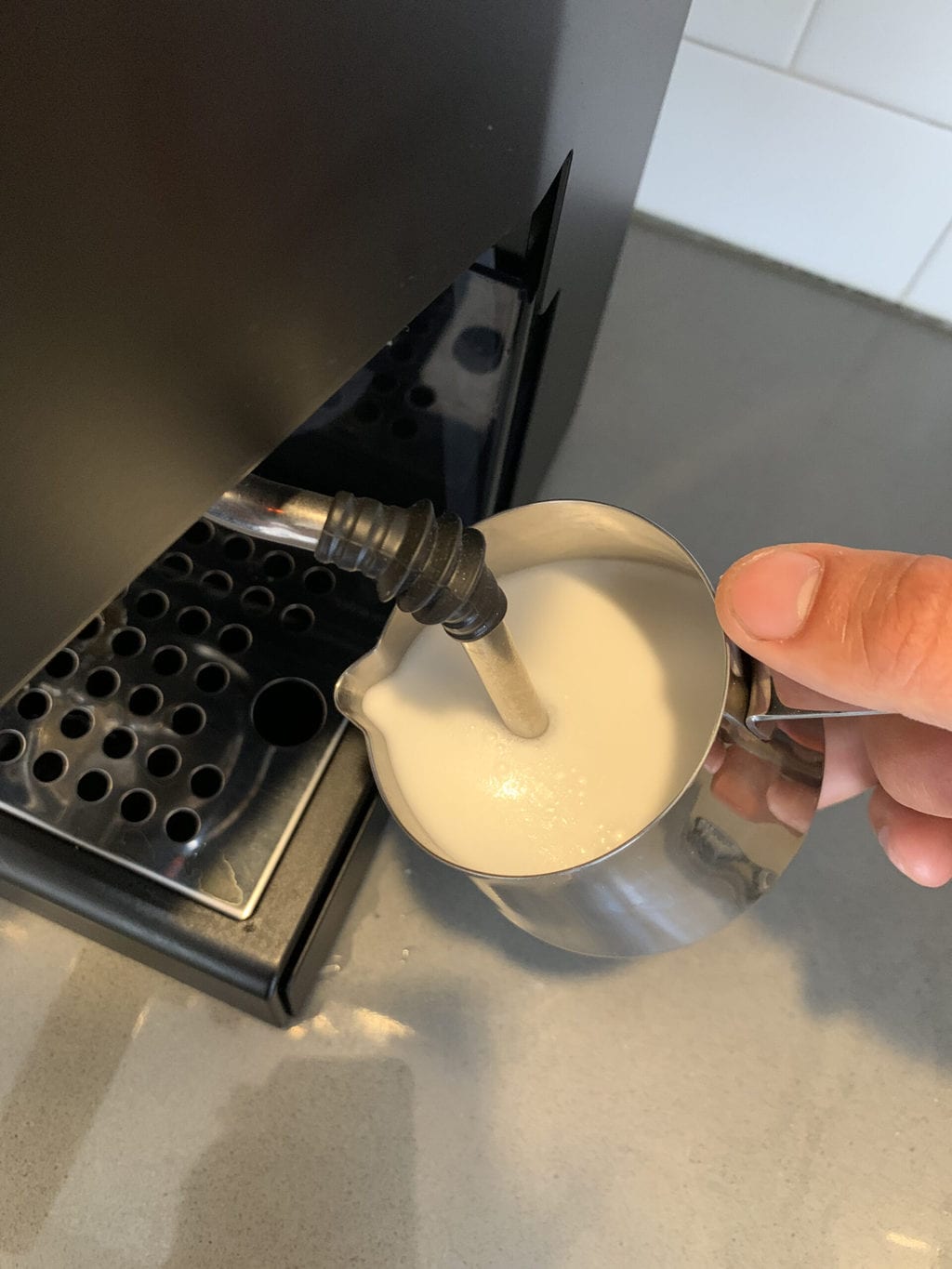
Fill your milk pitcher with your preferred milk. Submerge the steam wand just below the surface of the milk and slowly open the steam knob. As you begin to pull air into the milk, you will hear a hissing sound.
Hold the pitcher at this point for about five seconds. You will start to stretch the milk volume and produce foam.
Step 3: Texturizing
Once you’ve stretched the milk, lower the steam wand about 1/5 inch below the surface of the milk. Hold the milk pitcher at a tilt, and start the milk spinning to create a “whirlpool.” The spin texturizes the milk by combining your milk foam with the rest of the milk.
Step 4: Finish Steaming
You’ll know your milk is ready when it achieves a shiny and creamy texture. You want your milk to reach a temperature of 140 degrees.
I like to keep one finger resting on the bottom of my milk pitcher to feel when it is warming up. Close the steam wand and turn off the steam button when the pitcher is hot to the touch. Your steamed milk is ready to pour and maybe even create some beautiful latte art.
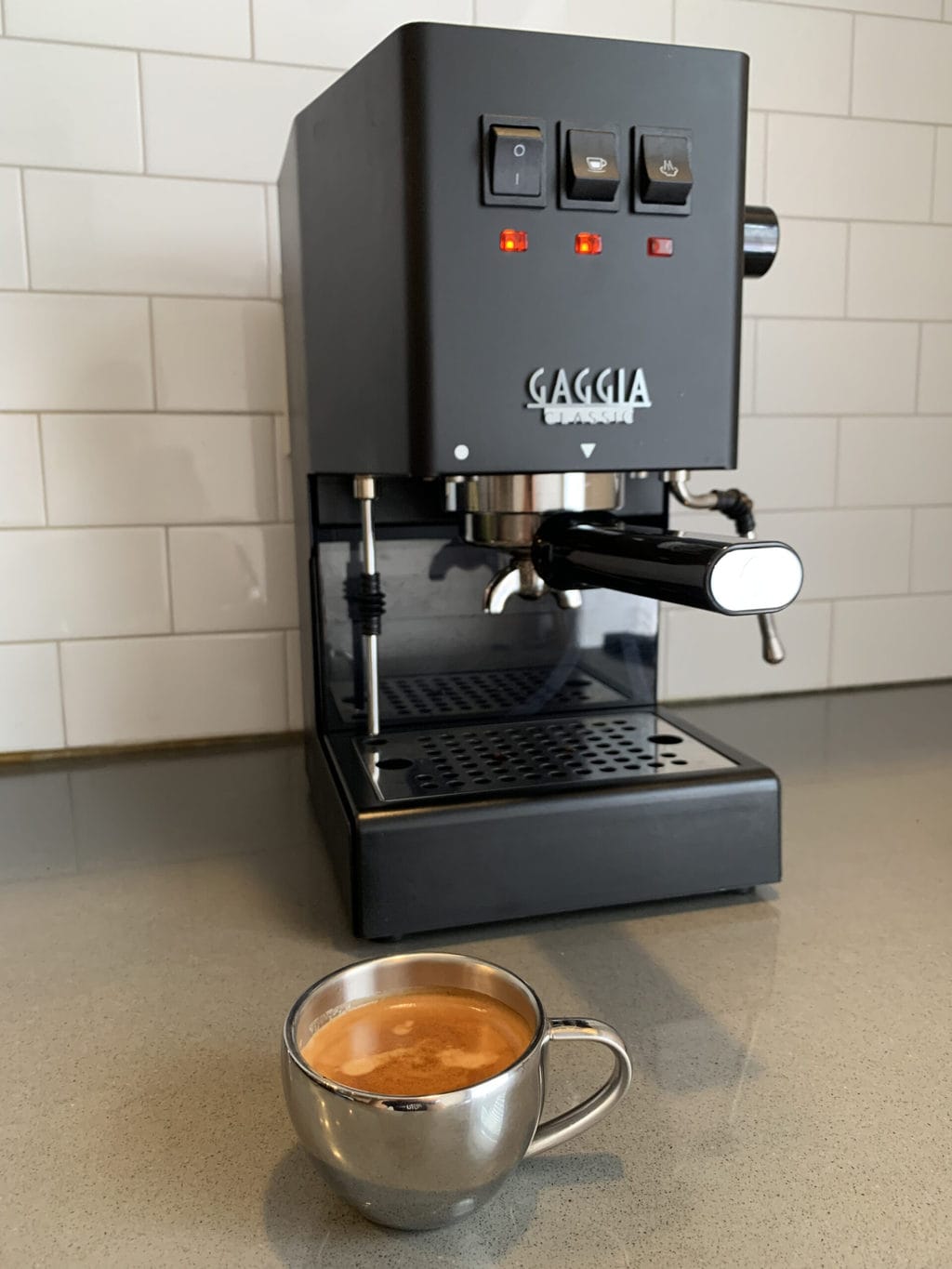
Step 5: Clean Up
Wipe your steam wand with a wet towel as soon as possible. Wiping away the residue keeps the milk from drying and sticking to your steam wand.
Bring your machine down to brewing temperature by hitting the espresso button and running water through your group head. This step releases superheated water from the machine and refills your boiler with water.
Your machine is now ready to power down.
Happy Caffeinating!



